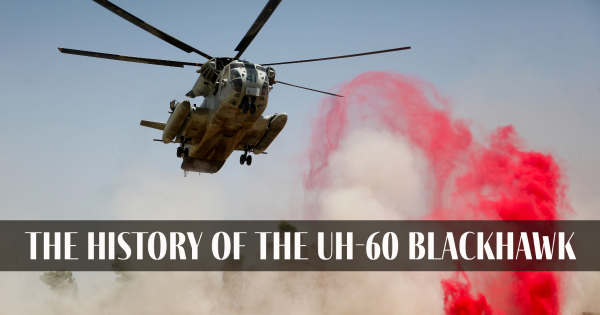Navigating Uh 60 Helicopter Rules and Compliance Requirements

Regulatory Structure Summary
The regulative framework governing UH-60 helicopter operations incorporates a facility collection of standards and rules developed by air travel authorities. These policies are designed to ensure the effective and safe operation of UH-60 helicopters in numerous atmospheres. The Federal Aviation Management (FAA) plays a central role in developing and implementing these laws, which cover a vast array of operational facets, including airworthiness criteria, pilot certifications, maintenance needs, and operational procedures.
Conformity with these guidelines is vital for helicopter drivers to preserve the highest degree of safety and operational honesty. Failing to stick to these regulations can lead to serious repercussions, consisting of mishaps, injuries, and governing sanctions. Helicopter operators need to remain informed regarding the most current regulatory advancements and make certain that their procedures are in full compliance with all applicable guidelines and requirements.
Airworthiness Evaluations and regulations
In the middle of the regulative framework controling UH-60 helicopter procedures, an important focus lies on compliance with Airworthiness Directives and performing detailed assessments to maintain safety criteria and operational dependability. Airworthiness Directives (Advertisements) are provided by aviation authorities to resolve dangerous conditions in airplane, including the UH-60 helicopter, and required certain actions to be taken by proprietors or operators. Conformity with ADs is required, and failure to stick to these regulations can cause major effects, including grounding of the airplane.
Regular examinations are critical to making certain the airworthiness of UH-60 helicopters. These assessments incorporate a variety of checks, from regular daily assessments performed by pilots before and after trips to extra extensive set up upkeep evaluations accomplished by licensed mechanics. Furthermore, unique inspections may be needed based upon specific conditions or incidents. By sticking to a stringent examination regimen, operators can find and resolve potential issues immediately, consequently boosting the safety and integrity of UH-60 helicopter operations.
Pilot Credentials and Training

Pilot training for UH-60 helicopters is thorough and covers a large range of subjects, consisting of aircraft systems, emergency procedures, navigation, and mission-specific training. Additionally, pilots undergo simulator training to practice numerous emergency situation circumstances in a controlled environment. This training assists pilots create the essential abilities to take care of difficult circumstances effectively.


Moreover, ongoing training and professional advancement are essential for UH-60 pilots to remain current with the most up to date regulations, innovation, and ideal techniques. By buying pilot qualifications and training, operators can boost safety, optimize performance, and make sure conformity with governing needs in the operation of UH-60 helicopters.
Operational Limitations and Demands
Pilot credentials and training function as the structure for recognizing the functional constraints and needs linked with UH-60 helicopter procedures (uh 60). These functional restrictions are put in place to ensure the safety of the crew, passengers, and the airplane itself. Functional restrictions may include factors such as weather condition conditions, weight restrictions, altitude restraints, and functional boundaries. It is important for pilots to be skilled in these limitations to make informed choices during flight operations. In addition, conformity requirements, such as adhering to details trip paths, interaction procedures, and emergency go to this web-site treatments, are crucial for preserving functional safety and security and regulative compliance. Pilots have to stay current with all functional limitations and needs with normal training, instructions, and evaluates to mitigate threats and guarantee secure and effective UH-60 helicopter operations. By focusing on adherence to these operational standards, pilots can improve the total security and performance of their objectives while promoting regulative criteria.
Emergency Procedures and Compliance Testing
Efficient emergency procedures and detailed conformity testing are vital parts of keeping operational security and regulative adherence in UH-60 helicopter procedures. Emergency procedures include procedures for different situations, including engine failures, fires, hydraulic issues, and more. Pilots and team members should be well-versed in these procedures to respond promptly and properly in emergency situations. Routine compliance testing ensures that the helicopter meets all regulatory requirements stated by aeronautics authorities. This official website testing involves comprehensive evaluations, checks, and evaluations to validate that the aircraft is airworthy and in compliance with all applicable laws.
Conformity testing additionally includes equipment onboard the UH-60, such as interaction systems, navigation instruments, and safety gear. Ensuring that all devices is functioning properly and meets regulative standards is crucial for risk-free procedures. Additionally, compliance screening may include simulations of emergency situation scenarios to analyze the crew's action and the helicopter's performance under anxiety. By focusing on emergency treatments and conformity testing, UH-60 operators can alleviate threats and demonstrate their commitment to safety and security and regulative compliance.
Conclusion
In conclusion, adherence to regulatory framework, compliance with airworthiness regulations, pilot certifications and training, operational restrictions, and emergency procedures are necessary for browsing the regulations and needs of running a UH-60 helicopter. uh 60. It is essential for operators to prioritize safety and guarantee full compliance with all applicable regulations to maintain the airworthiness and functional integrity of the airplane
Navigating the regulative landscape surrounding UH-60 helicopter operations requires a nuanced understanding of the detailed internet of policies and compliance requirements.Compliance with these policies is necessary for helicopter drivers to maintain the highest degrees of security and operational integrity.Among the regulative framework controling UH-60 helicopter procedures, a vital focus exists on compliance with Airworthiness Directives and conducting thorough inspections to maintain security criteria and functional reliability.Reliable emergency procedures and detailed conformity testing are crucial parts of preserving functional security and governing adherence in UH-60 helicopter try this site operations. Normal compliance screening makes certain that the helicopter satisfies all regulatory demands established forth by air travel authorities.